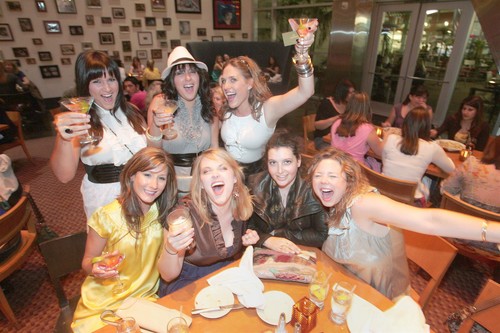Images source: latimes.com
I just saw Sex and the City movie opening weekend, arriving to the theater 30 minutes early to find 100 people in front of me. I had avoided the trailers (which basically spills most of the movie) and reviews, so most of the plot twists were still a surprise. To that idea, I am going to avoid major plot spoilers, will with bring up a few product or cultural references and minor scenes that will not ruin the movie. But if you’re a purist, you’ve been warned.
I heard that the movies was getting bad reviews (which is now leading to the inevitable backlash to the backlash.) After seeing I could guess why the critics were panning, and my gut instincts were confirmed after reading up what the critics said after my screening. The movie was made for fans, and the critics for the most part obviously were not watchers of the show. They complained about all the product placement in a movie based on a show the made “Manolo Blahnik” a household name. Furthermore, an early voiceover states that a major theme is “Labels and Love.” Note that labels come first. If you were watching for the fashion you were not disappointed (Louis Vuitton, Vera Wang, Dior, Vivienne Westwood, all make appearances along with the Manolos.) If you wanted new insight on human behavior or a stretch in cinematic achievement, you were disappointed.
The labels of SATC taps into some of my recent readings and posts. Especially relevant is the idea that we create identities from our brands that Rob Walker explores in “Buying In.” In the middle of a very good read, “Transformations,” by Grant McCracken who examines our culture of transformation. Combining these two ideas show the way people seek transformation of the self with brands and in the cast of SATC fan through fashion labels.
Years after the HBO series ended, the cultural currency of SATC is shockingly strong, even if the SATC fan has reached point of cliche. (Before, I delve too far into discussing the SATC fan and lest you think I’m taking easy cultural criticism pot shots, I’ll just admit now that I made plans to see the movie back in January.) Defying negative reviews and blowing out opening box office estimates, fans of the show arrived in droves and in dress. The most telling sign of the strength the shows influence is the film’s ability to self-reference the caricature of the SATC fan, with shots of other groups of female foursomes out for the night. Even more so, we see the on-screen characters state they stopped drinking their once prerequisite Cosmopolitans cocktails (which was the signature drink of the show,) because Cosmos become too popular. The applause which erupted at the end of my screening proved that the audience didn’t take offense. They chose affirmation over critique of the film’s self-awareness of SATC’s cultural impact.
That self-awareness is assuredly post-modern. The movie offers an urban princess roadmap. Moving from renting luxury bags from the internet to owning the real thing suggests McCracken’s idea that our society is not only transformational, but also one of *upward transformational*. The ultimate end point is the penthouse apartment on Fifth Avenue, with a closet that evoked an audible gasp from my fellow audience members. Literal references to the fairy tale are seen in the film via a young daughter’s request to have Cinderella re-read to her, which reveals the existence and the power of the SATC myth of (for the vast majority of fans to realize) the unobtainable. Therefore, the myth relies on a simulation of a lifestyle which is constructed and supported by both the creators and actors of the show, as well as, the fans.
The simulation relies on more than buying knock off LV bags on Canal Street, but the SATC creators involvement as well. Sarah Jessica Parker’s foray into producing fashion is her Bitten line, with Steve & Berry, a ultra-inexpensive clothing chain where dresses cost under $10. The relationship of the culture and myth SATC and the fashion world is complex. Vera Wang criticized the Steve & Berry line, perhaps feeling defensively of rendering the sanctity of not only the fashion designer but of luxury itself. I guess they made up because a Wang gown has a fairly prominent placement in the movie. Perhaps, Wang realizes that in this new world of simulated luxury, she is as dependent on SATC and Parker as they are to her. It is hard if not impossible today to make couture profitable, thus designers use couture for brand building and eventually go mass to make the serious money. (Teri Agris’ “End of Fashion” is still to my knowledge the best description of the evolution of fashion from top down scarcity to horizontal mass.)
This duality of the simulation, of the myth maker and believer mutual reliance on each other should ultimately not be that surprising, although it feels that it should. The relationship is a house of cards of interlocking layers, and seemingly contradictory forces.
With the current world of mass luxury and simulated luxury, the end result is that the very idea of luxury itself becomes a myth and part of the simulation. It is rendered meaningless by both the producers, buyers, and aspirers. We must keep up the illusion, but how can this balancing act last? Removing scarcity, will ultimately destroy the idea of luxury. Perhaps, it is already gone, as Cathy Horn has wisely suggested, and if that is true, what comes next?




